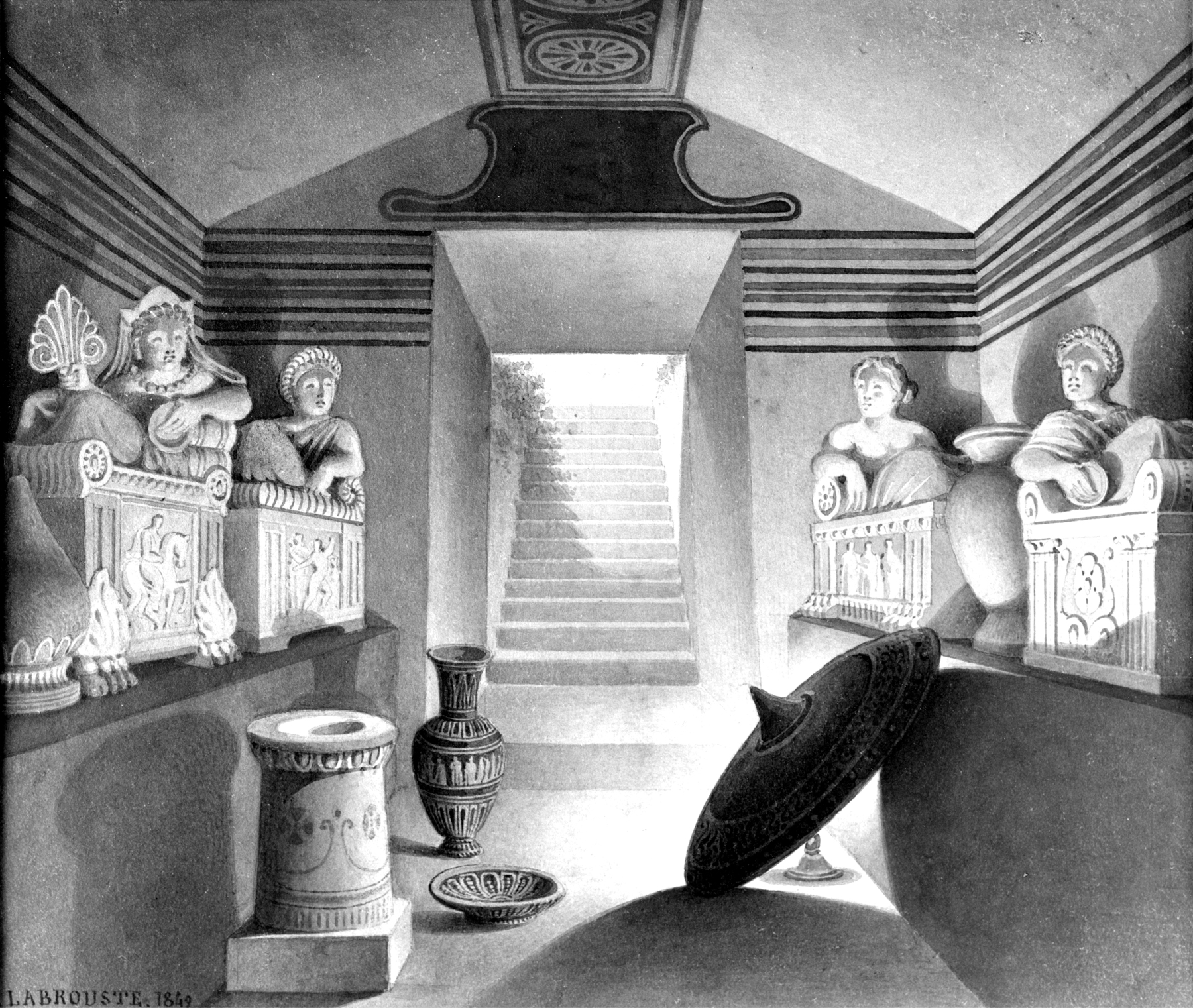View of an Etruscan Tomb
(18th and 19th Centuries )
The character of the Etruscan tomb shown here, which may be an imaginary reconstruction using the earlier drawings as an "aide-mémoire," similarly reflects Labrouste's interests. Although Labrouste does not include any of the wall paintings commonly found in such tombs, he does emphasize how the basic shape of the tomb and its decorative detail- particularly the striped freeze and the painted lintel above the door-worked together to create a unified space. The placement of the sarcophagi along the walls and the vases and other ceramic items underscores the orientation of the structure toward the steep steps that lead the visitor up and out of the tomb and into the Italian countryside. The placement of the light in the scene, which gradates from an extremely dark foreground to a light background, further enhances the shape, size, and direction of the room.
Inscription
Provenance
Provenance (from the French provenir, 'to come from/forth') is the chronology of the ownership, custody, or location of a historical object. Learn more about provenance at the Walters.
Didier Aaron, Inc., New York [date and mode of acquisition unknown]; Walters Art Museum, 1999, by purchase.
Exhibitions
| 2005-2006 | The Essence of Line: French Drawings from Ingres to Degas. The Walters Art Museum, Baltimore; Baltimore Museum of Art, Baltimore; Birmingham Museum of Art, Birmingham; Tacoma Art Museum, Tacoma. |
Conservation
| Date | Description | Narrative |
|---|---|---|
| 1/1/2002 | Treatment | examined for exhibition; repaired; re-housed; mounted; other |
Geographies
France (Place of Origin)
Measurements
H: 5 9/16 x W: 6 11/16 in. (14.1 x 17 cm)
Credit Line
Museum purchase, 1999
Location in Museum
Not on view
Accession Number
In libraries, galleries, museums, and archives, an accession number is a unique identifier assigned to each object in the collection.
In libraries, galleries, museums, and archives, an accession number is a unique identifier assigned to each object in the collection.
37.2756




